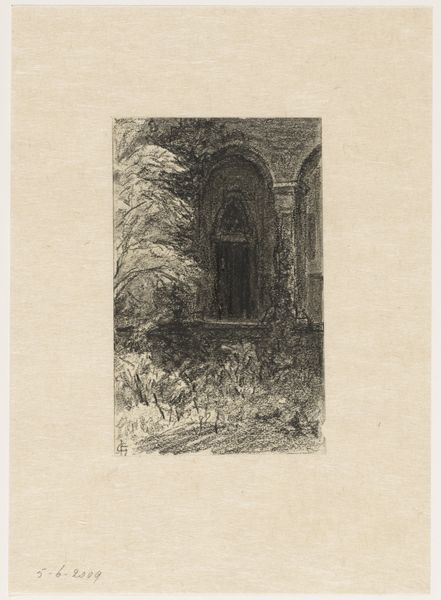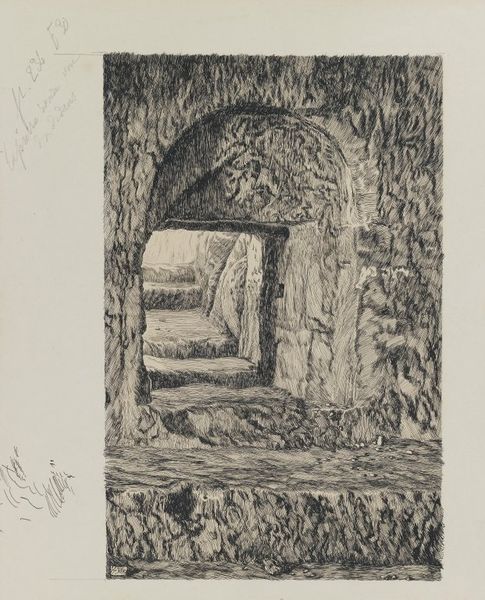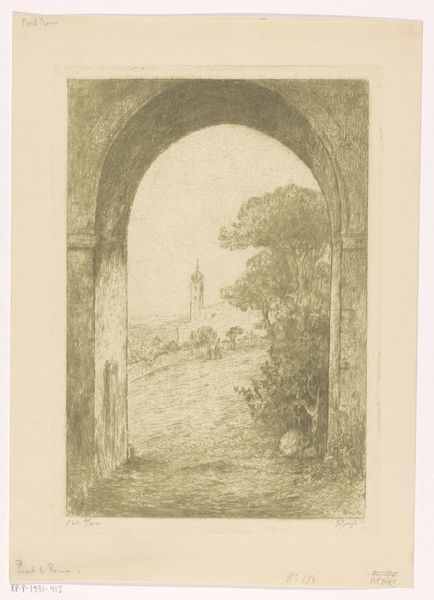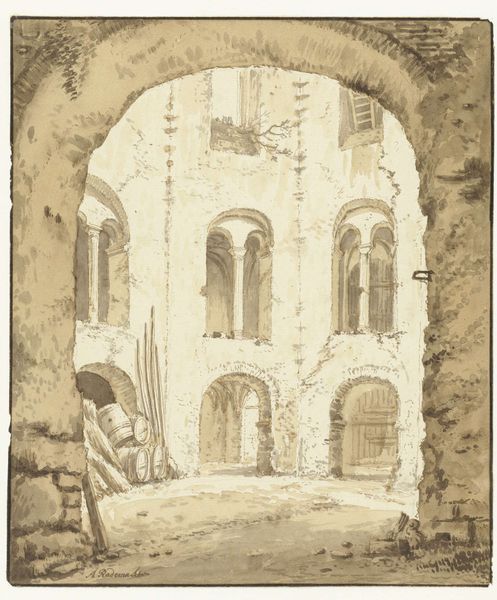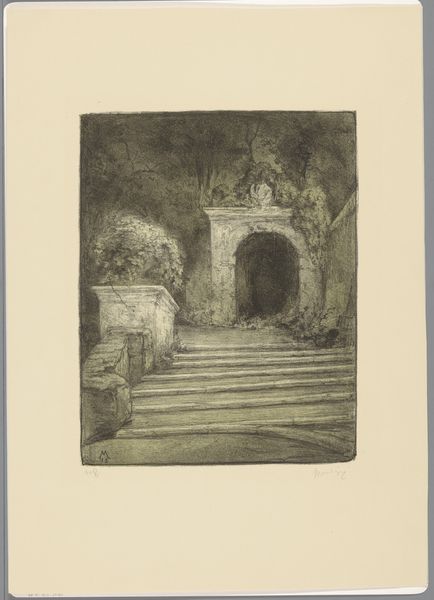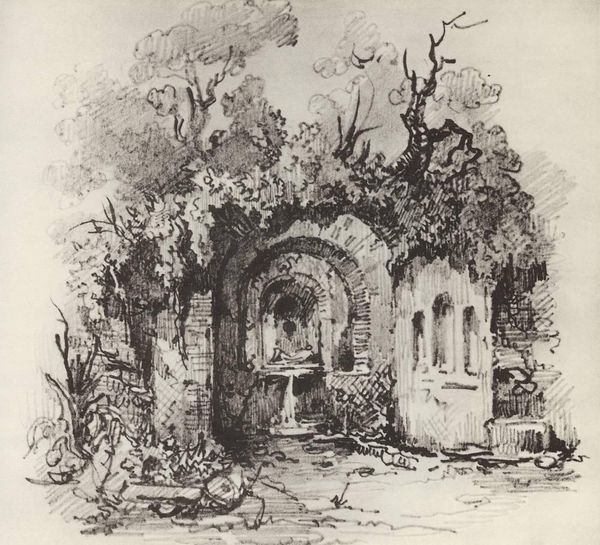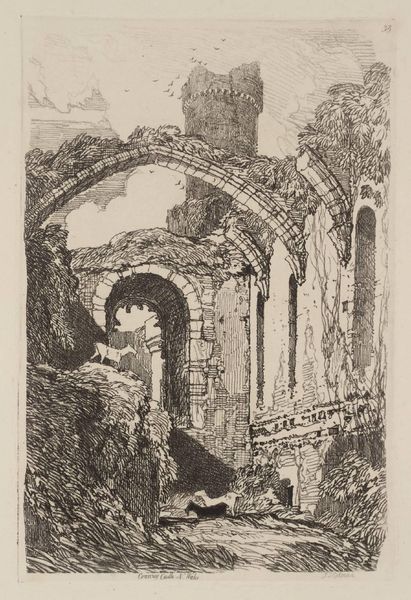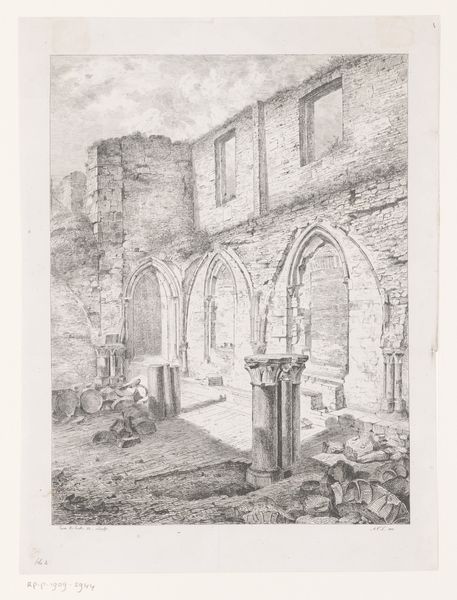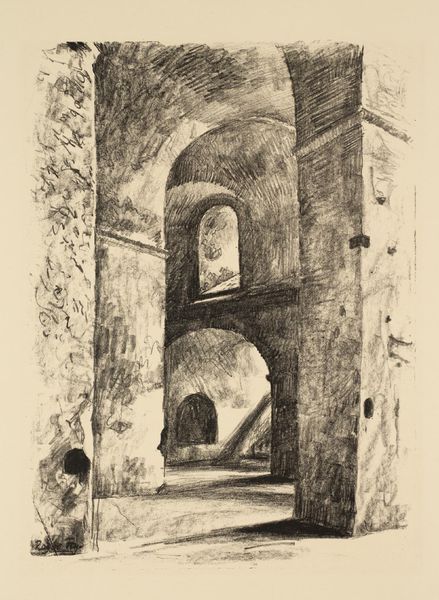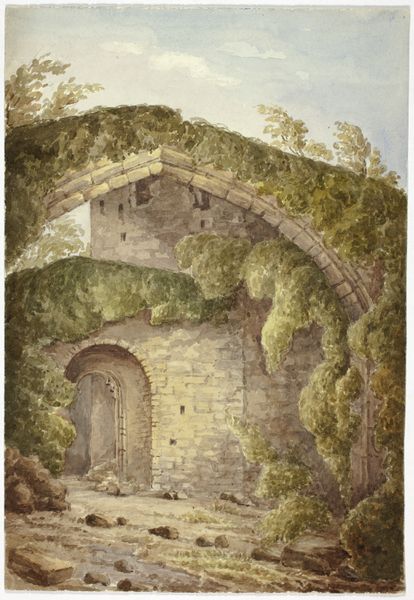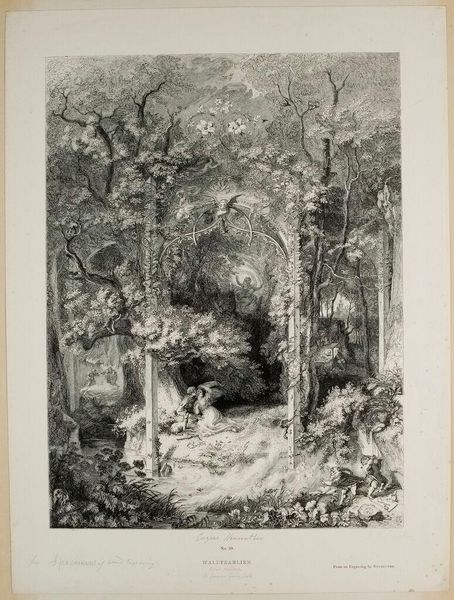
Dimensions: support: 527 x 400 mm
Copyright: © Tate | CC-BY-NC-ND 4.0 DEED, Photo: Tate
Curator: Looking at John Piper's "The Dairy, Fawley Court," I can't help but feel a bit haunted, as if the building is a forgotten relic. Editor: That's interesting. I see the work's relationship to power. Consider the dairy as a site of rural labor, often performed by women, commodified within the architecture of wealthy estate. The image renders visible the exploitation inherent in such bucolic scenes. Curator: Absolutely, and Piper’s use of muted tones and stark lines adds to that sense of alienation, a detachment. It's as if the building is receding into the shadows. Editor: Right, the shadows are key. They remind us of the obscured histories that are often deliberately erased from these picturesque views of the English countryside. Whose labor built this dairy, and under what conditions? Curator: A beautiful, chilling reminder that even the most idyllic scenes have their dark corners. Editor: Indeed. It invites us to question what is intentionally left unseen, prompting critical reflection on the structures of class and gender that underpin seemingly innocent landscapes.
Comments
tate 6 months ago
⋮
http://www.tate.org.uk/art/artworks/piper-the-dairy-fawley-court-n05215
Join the conversation
Join millions of artists and users on Artera today and experience the ultimate creative platform.
tate 6 months ago
⋮
Piper lived near this Romanesque building in Oxfordshire. In 1940 he was beginning to make works of art out of his interest in British architecture. This is one of many drawings in which he imitated the monochrome but very clear studies by John Sell Cotman, who had drawn churches in Norfolk early in the nineteenth century. It is disappointing that it was such a modest painting as this that was the first of Piper’s works to be acquired by the Tate Gallery. Gallery label, July 2008
